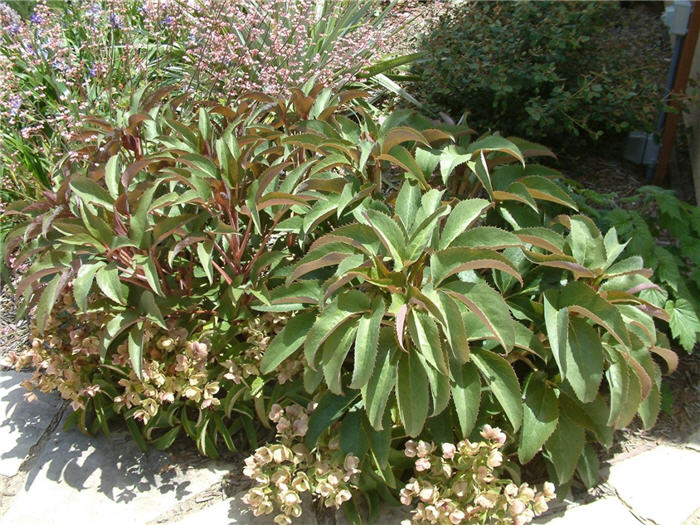| Botanical Name: Helleborus x hybrids | |
| Common Name: Hybrid Hellebore |

-
Anatomy
-
Culture
-
Design
Plant Type
Broadleaf Evergreen, Perennial
Height Range
1-3'
Flower Color
Blue, Green, Lavender, Pink, Yellow, White
Flower Season
Winter, Spring
Leaf Color
Dark Green
Bark Color
n/a
Fruit Color
n/a
Fruit Season
n/a
Sun
Half, Shade
Water
Medium
Growth Rate
Moderate
Soil Type
Clay, Loam
Soil Condition
Average, Rich, Well-drained, Dry
Soil pH
Neutral
Adverse Factors
Attracts Bees
Design Styles
English Cottage, Japanese, Mediterranean, Ranch, Spanish, Woodland
Accenting Features
Showy Flowers, Unusual Foliage
Seasonal Interest
Winter, Spring
Location Uses
Entry, Perennial Border, Shrub Border, Foundation, Patio
Special Uses
Filler, Mass Planting, Naturalizing, Small Spaces
Attracts Wildlife
n/a
Information by: Stephanie Duer
Photographer:
Photographer:
-
Description
-
Notes
The Hellebore hybrids are evergreen perennials, providing much needed texture and color to the late winter/early spring garden. Leaves are large and deeply lobed, nearly palmate, and are deep green though frequently maroon underneath. Flowers appear in late winter to early spring, and are cup-shaped to more open, nodding, and come in a softened version of nearly every color; some even have lovely veining of spots. Generally under 18 inches, though some get to be 24 inches tall; about 18 inches wide though in time they will gently colonize. A lovely plant for dry, shady borders, or as an understory plant. Perennial Plant Association Plant of the Year for 2005.
Grow in well drained, loamy to coarse soil in part shade to part sun; hellebore is not very heat tolerant so be certain that it receives shade during the hottest part of the day in the summer months. Plant where it will receive some protection from drying winter winds. Though evergreen, some leaves may look tatty after our long winters, and so snip them off near the base of the plant for a tidy appearance and to better see the emerging flowers. Though they appreciate regular watering, when in a part sun setting with well amended soil they can be remarkably drought tolerant. Visit hellebores.org for more information. Hardy to USDA Zone 6.